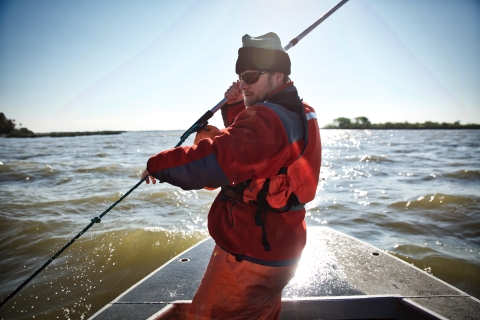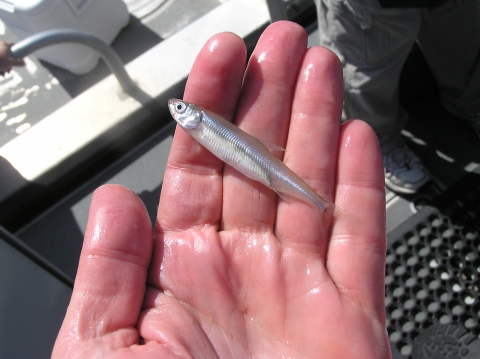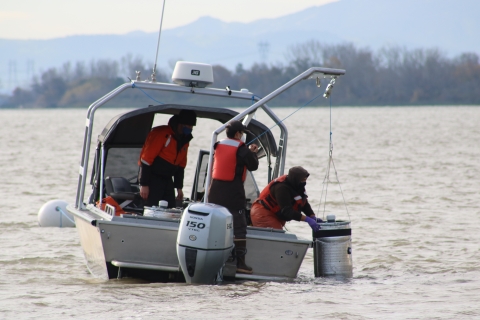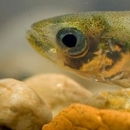States
CaliforniaEnhanced Delta Smelt Monitoring
The Delta smelt is a small, short-lived, native fish that is found only in the San Francisco Estuary. Though it was once an abundant species, rapid decline led to the species being listed as threatened in 1993 under the federal Endangered Species Act and California Endangered Species Act. California subsequently upgraded the listing to endangered in 2010.
Historically low numbers of Delta smelt fueled the evaluation and refinement of Delta smelt monitoring efforts in the San Francisco Estuary. The Lodi Fish and Wildlife Office began the Enhanced Delta Smelt Monitoring program in December 2016.
EDSM has three objectives: (1) estimate the total abundance of Delta smelt on a weekly basis, (2) estimate their spatial distribution at a management-relevant spatial and temporal resolution, and (3) provide data that support management decisions and address scientific questions to further understanding of sampling efficiency, drivers of Delta smelt population patterns, and other conservation and management-relevant topics.
EDSM is a high-effort, year-round monitoring program. Field crews sample randomly selected locations throughout the San Francisco Estuary. This sampling technique provides well-distributed site locations to produce better spatial information. Throughout the year, the program targets three Delta smelt life stages (larvae, juvenile and adult) using multiple gear types. EDSM reports data in near-real time.
Daily and weekly summary reports are available in the Lodi FWO Monitoring Data collection. Complete data files that have undergone final quality checks are available on the Environmental Data Initiative Data Portal. You can also email denise_goodman@fws.gov for more information.
Lodi and Bay-Delta FWO scientists have used the data to produce peer-reviewed journal articles, some of which can be viewed at the links below, and are developing Delta Smelt statistical models, which assess and predict the effects of water-management actions on the fish’s population.
Lodi's EDSM team is also working with the Bay-Delta FWO and other partners on a plan to begin stocking hatchery-raised Delta smelt in 2024 to bolster the wild population. The Bay-Delta FWO genetics-management and species-supplementation experts and LFWO field staff are collaborating with other federal and state agencies, the University of California, Davis, and other stakeholders on research to guide supplementation. This includes developing a spawning strategy that will achieve genetic-management objectives and developing genomics-based markers that will enable the team to monitor smelt in the wild and estimate the genetic effects of supplementation. Experimental Delta smelt release efforts began in December 2021.
Peer-Reviewed Journal Articles
Seasonal floodplain served as refuge for Delta smelt during drought years, PLOS ONE, January 2019







